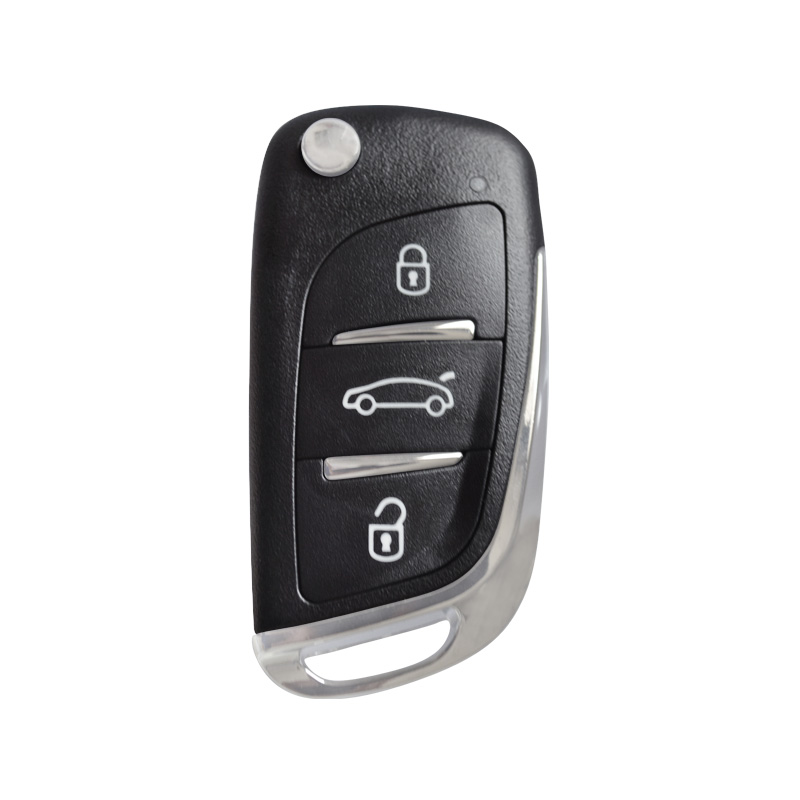As automotive technology continues to advance, the security of keyless entry systems, particularly fob keys, becomes a top priority for automakers and security companies. Fob keys, which provide convenient and secure access to vehicles, are susceptible to evolving threats from sophisticated attackers. In this article, we will explore the strategies employed by automakers and security companies to address the evolving challenges of fob key security and stay ahead of potential threats.

1. Advanced Encryption Protocols:
Automakers and security companies invest heavily in developing and implementing advanced encryption protocols for fob keys. Strong encryption algorithms protect the communication between the fob key and the vehicle, making it significantly more challenging for attackers to intercept or replicate the signals.
2. Rolling Code Technology:
Rolling code technology, as discussed earlier, is a prevalent feature in fob keys. Automakers leverage rolling code systems to ensure that each key transmission generates a unique and unpredictable code. This dynamic approach mitigates the risk of code interception and replay attacks, providing an additional layer of security.
3. Firmware Updates and Over-the-Air (OTA) Security:
Regular firmware updates are crucial to address emerging security vulnerabilities. Automakers implement over-the-air (OTA) update capabilities, allowing them to remotely deploy security patches and updates to fob key systems. This proactive approach ensures that the security of fob keys can be continuously strengthened to counter new threats.
4. Biometric Integration:
Some modern fob keys incorporate biometric authentication, adding an extra layer of security. Biometric features, such as fingerprint recognition, make it more challenging for unauthorized individuals to gain access to the vehicle. Biometric integration enhances the uniqueness and personalization of access control.
5. Multi-Factor Authentication (MFA):
Implementing multi-factor authentication adds an additional security layer to fob key systems. Combining traditional authentication methods with additional verification steps, such as biometrics or PIN codes, enhances overall security. MFA makes it more difficult for attackers to compromise the access control system.
6. Behavioral Analytics and Anomaly Detection:
Behavioral analytics and anomaly detection technologies are employed to monitor and analyze patterns of fob key usage. Unusual or suspicious behavior, such as unexpected access attempts, can trigger alerts, allowing automakers and security companies to investigate and respond to potential threats promptly.
7. Collaboration with Cybersecurity Experts:
Recognizing the dynamic nature of cybersecurity threats, automakers often collaborate with cybersecurity experts and research institutions. This collaboration facilitates the identification of emerging threats, the development of robust countermeasures, and the continuous improvement of fob key security.
8. Threat Modeling and Risk Assessments:
Automakers conduct threat modeling and risk assessments to identify potential vulnerabilities in fob key systems. By proactively assessing the security landscape, they can prioritize and address the most critical threats, ensuring a comprehensive and effective security strategy.
9. Customer Education and Awareness:
Automakers and security companies actively engage in customer education and awareness campaigns. Providing users with information on best practices for fob key security, such as avoiding sharing key information or keeping keys in proximity to potential attackers, helps mitigate risks associated with human behaviors.
Conclusion:
The evolving challenges of fob key security demand a proactive and multifaceted approach from automakers and security companies. From advanced encryption and rolling code technology to biometric integration, multi-factor authentication, and collaboration with cybersecurity experts, these strategies collectively create a robust defense against potential threats. By staying ahead of emerging risks and continuously enhancing fob key security, automakers and security companies ensure that keyless entry systems remain a secure and reliable component of modern vehicles.

 Englishen
Englishen











 No.991 Xingxiu Road,Taiwanese Investment Zone, Quanzhou, Fujian Province,P.R.China
No.991 Xingxiu Road,Taiwanese Investment Zone, Quanzhou, Fujian Province,P.R.China +86 13960286508
+86 13960286508
 3D Reality Showroom
3D Reality Showroom
